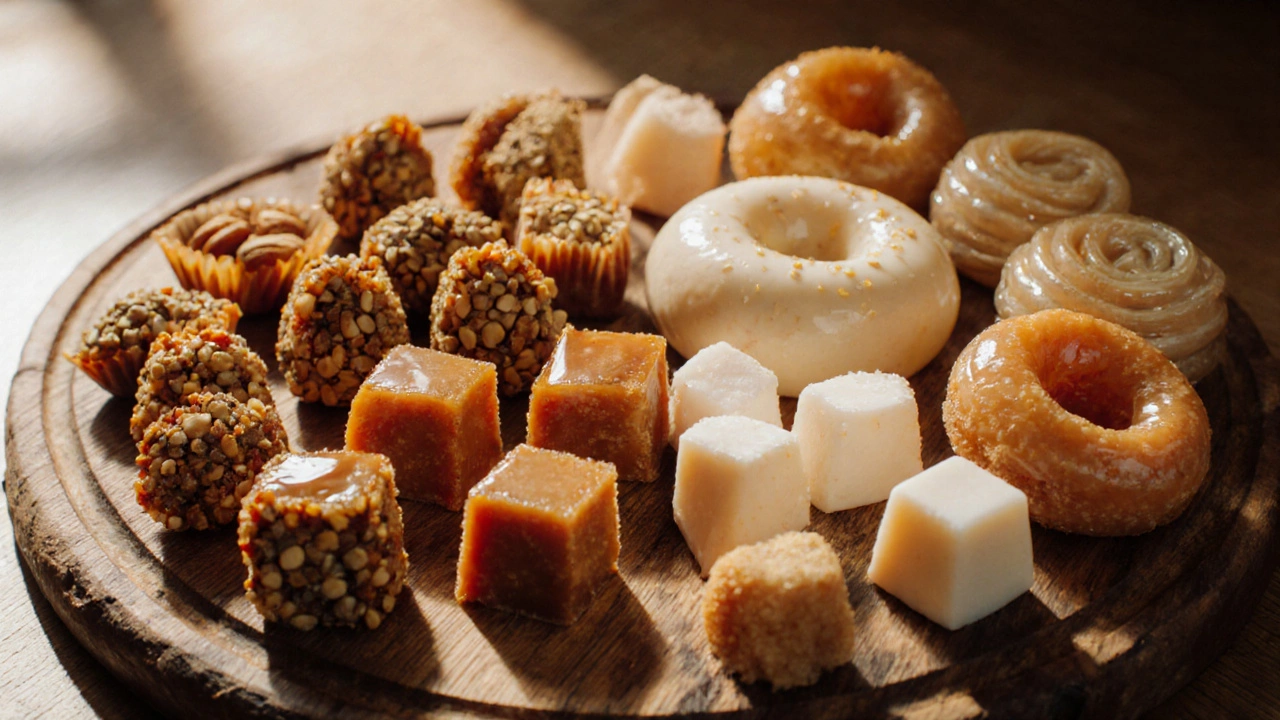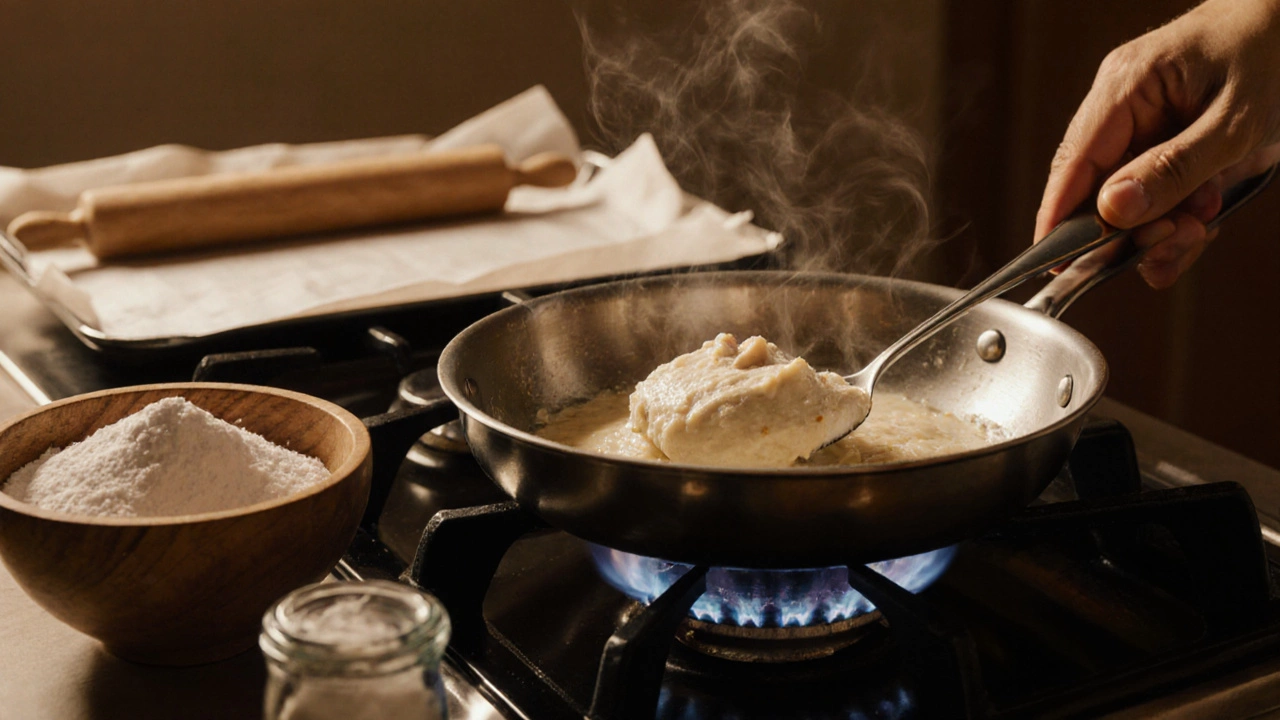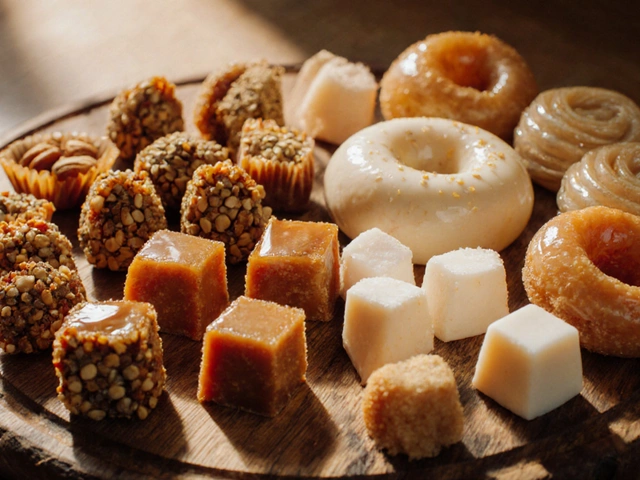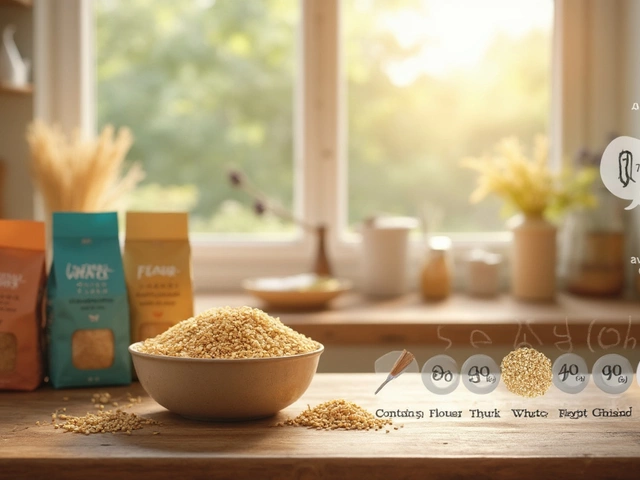
Vegan Mithai Checker
Check if Your Favorite Indian Sweet is Vegan
Select a sweet from the list below to see if it's traditionally vegan or needs modifications. This tool is based on standard ingredients and preparation methods for Indian mithai.
Important Note
Common Allergens
Ever wondered if you can enjoy a sweet bite of Indian vegan mithai without compromising your plant‑based lifestyle? The good news is that a surprising number of traditional treats are already free of animal products, while others can be tweaked with simple swaps. This guide walks you through the ingredients that make a mithai non‑vegan, lists the sweets that are safe as‑is, and shows how to spot or create vegan versions of your favorites.
What Makes Mithai Vegan?
In Indian cuisine, Mithai is a broad category of confections that includes everything from syrup‑soaked balls to dense nut bars. The key to deciding whether a mithai is vegan lies in its ingredients such as dairy, ghee, honey, or animal‑derived emulsifiers. If a sweet relies solely on plant‑based oils, sugar, nuts, flours, and fruit‑based syrups, it passes the vegan test.
Common Non‑Vegan Culprits in Indian Sweets
Most traditional mithai recipes share a handful of animal‑derived components:
- Ghee - clarified butter that gives a rich, buttery mouthfeel.
- Milk and cream - used in barfi, peda, and many milk‑based halvās.
- Condensed milk - adds sweetness and thickness, but is dairy‑based.
- Honey - occasionally used as a natural sweetener.
- Eggs - rare in traditional mithai, but appear in some modern fusion recipes.
If any of these appear on the ingredient list, the sweet is not vegan. Look for plant alternatives like coconut oil, almond milk, or agave syrup instead.
Definitely Vegan Mithai (No Animal Ingredients)
These classics are traditionally made without dairy, ghee, or honey. They’re safe to enjoy straight out of the box-just double‑check packaged versions for added emulsifiers.
- Kaju Katli is a cashew‑based fudge that uses sugar syrup and a pinch of cardamom, traditionally cooked in oil. Most recipes use a neutral oil instead of ghee, making it vegan.
- Chikki is a brittle made from roasted nuts or seeds bound together with jaggery or sugar. No dairy involved.
- Dry Fruit Ladoo is a ball of blended nuts, dates, and coconut, sweetened with treacle or maple syrup. The binding comes from fruit paste, not ghee.
- Sesame Seed Barfi (Til Barfi) is a sweet made from roasted sesame seeds, jaggery, and a splash of plant oil. No milk or butter.
- Jaggery Halwa is a simple pudding of grated carrots or pumpkin cooked in oil with jaggery and spices. Often called 'Gajar ka Halwa' when made with dairy, but the oil‑only version is vegan.
Possibly Vegan Mithai (Depends on Recipe or Brand)
These sweets are traditionally dairy‑heavy, yet many manufacturers now offer plant‑based versions. When buying, read the label or ask the vendor.
- Rasgulla - typically made from paneer (cottage cheese). Some artisanal brands use tofu or soy curd as a substitute.
- Gulab Jamun - normally prepared with khoya (reduced milk solids). Vegan variants replace khoya with almond or cashew paste.
- Peda - traditionally milk‑based. Look for recipes that swap condensed coconut milk for dairy milk.
- Barfi (generic) - many flavors (almond, pistachio) can be vegan if made with oil instead of ghee.
- Jalebi - fried batter soaked in sugar syrup. The batter usually contains yogurt; vegan versions use plant‑based yogurt or a simple flour‑water mix.
How to Verify Whether a Sweet Is Vegan
Even with the lists above, it’s wise to have a quick checklist for confirming vegan status:
- Read the ingredient list. Look for any of the non‑vegan culprits listed earlier.
- Check for hidden dairy. Terms like "milk solids," "casein," "whey," or "caseinates" indicate animal milk.
- Watch for “may contain” statements. Cross‑contamination warnings don’t affect vegan status but matter for strict avoidance.
- Ask the seller. Small sweet shops often use traditional recipes; they might gladly switch ghee for oil on request.
- Look for certifications. Symbols such as the “V” (vegan) logo or a clear “Vegan” claim on packaging are reliable.

DIY Vegan Mithai: Simple Swaps You Can Try at Home
Making your own sweets gives you total control over ingredients. Below are three quick recipes that replace dairy with plant‑based alternatives.
Kaju Katli (Vegan Version)
- Soak 200g cashews for 2hours, then blend into a fine paste.
- In a non‑stick pan, heat 2tbsp coconut oil over medium heat.
- Add the cashew paste, 150g powdered sugar, and a pinch of cardamom. Stir continuously for 8‑10minutes until the mixture leaves the sides of the pan.
- Transfer to a greased tray, level with a rolling pin, and let cool. Cut into diamonds.
Sesame Seed Barfi (Til Barfi)
- Dry‑roast 150g sesame seeds until fragrant; grind half into a coarse powder.
- Combine the remaining whole seeds, 100g jaggery, and 1tbsp neutral oil in a saucepan.
- Cook on low heat, stirring, until the jaggery melts and the mixture thickens (about 5minutes).
- Press into a greased dish, sprinkle with a drizzle of melted coconut oil, and let set.
Vegan Gulab Jamun
- Blend 100g soaked cashews, 30g almond flour, and 2tbsp soy milk to form a smooth dough.
- Roll into small balls (no more than 1cm radius) and dust with a little rice flour.
- Deep‑fry in warm oil (170°C) until golden, then drain.
- Prepare sugar syrup with 200g sugar, 250ml water, a few saffron strands, and a pinch of cardamom. Simmer for 5minutes.
- Soak the fried balls in warm syrup for 10minutes before serving.
Quick Takeaways
- True vegan mithai avoid ghee, milk, cream, honey, and eggs.
- Traditional vegan sweets include Kaju Katli, Chikki, Dry Fruit Ladoo, Til Barfi, and oil‑based Jaggery Halwa.
- Many dairy‑heavy classics now have vegan versions; always check labels or ask vendors.
- Simple swaps-coconut oil for ghee, almond/soy milk for dairy-let you recreate favorites at home.
- Use the 5‑step verification checklist before buying packaged sweets.
| SWEET | Main Ingredients | Vegan? | Typical Allergens |
|---|---|---|---|
| Kaju Katli | Cashews, sugar, oil | Yes | Tree nuts |
| Chikki | Peanuts or sesame, jaggery | Yes | Peanuts, sesame |
| Dry Fruit Ladoo | Mixed nuts, dates, coconut | Yes | Tree nuts, coconut |
| Til Barfi | Sesame seeds, jaggery, oil | Yes | Sesame |
| Jaggery Halwa | Carrot or pumpkin, jaggery, oil | Yes (oil version) | None (unless nuts added) |
| Rasgulla | Paneer, syrup | Usually No | Dairy |
| Gulab Jamun | Khoya, flour, syrup | Usually No | Dairy |
| Peda | Milk, sugar, ghee | Usually No | Dairy |
| Jalebi | Flour batter, yogurt, sugar syrup | Usually No | Dairy (yogurt) |
Frequently Asked Questions
Is jaggery always vegan?
Most jaggery is pure cane sugar concentrate, so it’s vegan. However, some brands add bone char during processing. Look for a “vegan” label or choose certified Indian jaggery.
Can I use coconut oil instead of ghee in any mithai?
Coconut oil works well in most fried or baked sweets because it has a high smoke point and a neutral flavor. For delicate barfis, a neutral oil like sunflower keeps the taste authentic.
Do vegan sweets taste different?
The flavor profile stays largely the same because the core ingredients-nuts, sugar, spices-are unchanged. The only noticeable shift is the lack of buttery richness, which you can mimic with toasted nuts or a splash of vanilla.
Where can I buy ready‑made vegan mithai?
Many online Indian grocery stores now label vegan options. Look for brands like "EcoSweets," "Vegan Traditions," or local health‑food stores that carry organic nuts and jaggery. In NewZealand, Auckland’s vegan market stalls often showcase homemade versions.
Are there any hidden animal ingredients I should watch for?
Yes-look out for "casein," "lactose," "milk solids," "whey protein," and "bone char" on sugar labels. Some syrups contain dairy‑based emulsifiers. When in doubt, contact the manufacturer.








Write a comment